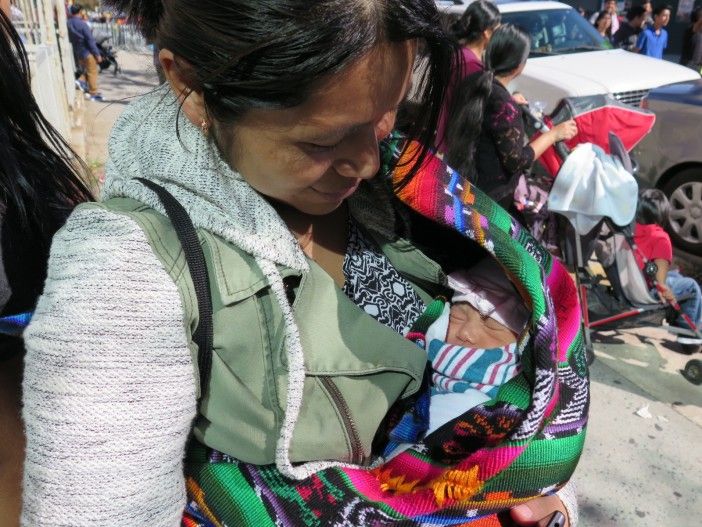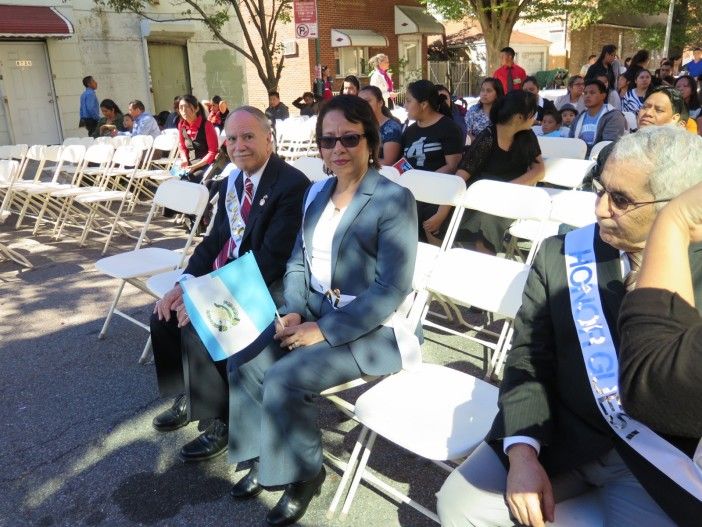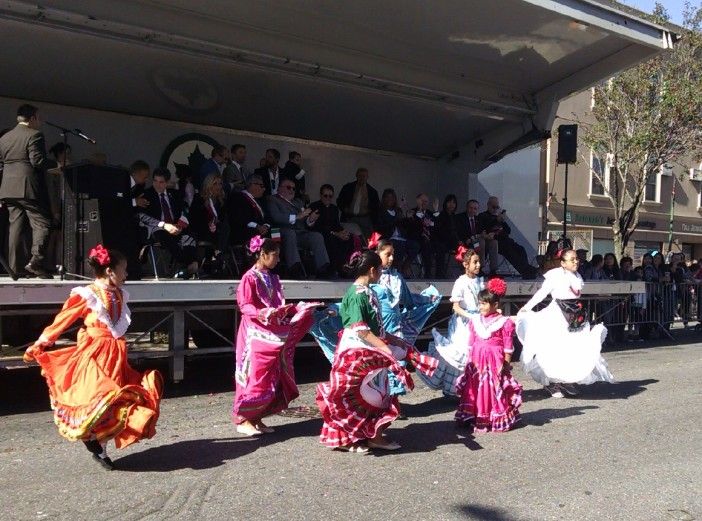Mixed Feelings About Celebrating Columbus For Indigenous Guatemalans In Southern Brooklyn

“The dialect; that’s the most important. Do not forget, ” Jeremías Alvarado said of his Guatemalan Mayan-Quiché heritage.
That is the main aspiration of the Guatemalan community in Bath Beach and Bensonhurst — to preserve the culture they left behind.
Alvarado does not celebrate Columbus Day — which overlaps each year with Hispanic Heritage Month — and did not partake in the annual Columbus Day Parade on 18th Avenue organized by the Federation of Italian American Organization (FIAO) on Saturday, October 10.
“I have no time, but celebrations are important, and we should not forget where we left,” says the owner of Jireh Restaurant, who witnessed the tail end of the parade from his business located at 8715 18th Avenue.

For the first year, many of the heirs of the culture of the Guatemalan highlands are opting out of the Italian heritage celebration, and instead making their presence felt in the neighborhood through faith. Taking advantage of the weekend’s festive atmosphere, on Sunday, October 11, more than 2,000 people participated in a Christian parade down 18th Avenue, one day after the traditional Columbus Day procession.
The majority of marchers were members of the 12 congregations of southern Brooklyn’s Pentecostal movement “Jóvenes Cristianos” (Young Christians), led by Pastor Eric Salgado.
A representative from the Consulate of Guatemala, Élida Toledo, was the guest of honor, and several local legislators were in attendance to show support for the community.

This new parade underscores divisions within Bensonhurst’s Hispanic community, and the conflicted feelings many have about Christopher Columbus’ controversial legacy.
“The Europeans tricked us”
In Brooklyn, many Guatemalans of Mayan descent are opposed to celebrating the day named for the Italian explorer — credited with “discovering” the Americas — at all.
Rolando Camacho, who represents the Guatemalan Immigration Movement, points out that the European conquerors robbed the indigenous peoples of their land, their valuables, and their rich traditions.
“They tricked us, they took away our gold and silver and [instead gave us] mirrors,” he said, explaining that the Mayan population had never seen mirrors before, and were fooled into believing they were of equivalent value.
Camacho also criticized Christian groups, which he said do not pay attention to the most important manifestations of the Mayan culture, and the Catholic Church which does not recognize the Mayan ceremonies as religion.
“The indigenous people have to encourage and motivate each other to retain what is ours,” he said.
Immigrants from other Central American countries we spoke to shared Camacho’s ambivalence towards the holiday.
“I can not hold a party for Columbus because that is further legitimizing Eurocentrism and the devastation they caused in our cultures — but it’s part of history,” said Salvador Aquino, a Bensonhurst resident of Salvadoran descent, whose last name is the same as the native Anastasio Aquino, the self-crowned “King of the Nonualcos,” who led a 19th Century revolution.

Camacho and Aquino are not alone. Across the United States, the holiday honoring Columbus as the discoverer of the “New World” has somewhat fallen out of vogue as more become aware of the Italian explorer’s mixed legacy. Some cities — like Seattle and Minneapolis — have even renamed October 12 Indigenous Peoples’ Day in honor of the natives whose lives and cultures were uprooted by Spanish invasions.
“We want to feel included”
Still, there are many indigenous Central American immigrants that choose to acknowledge the holiday simply because they have developed roots in Bensonhurst and recognize themselves as an integral part of a dynamic community.
Over the last few decades, Hispanic immigrants have been the workforce in an established business economy built by the Italian and Sicilian immigrants who came before them. For them, at least on a local level, this is something to celebrate.
https://www.youtube.com/watch?v=syBSpW9TMjs&feature=youtu.be
That is the case for Fabiola Colotl, a native of the Mexican state of Puebla. One of her children participated in FIAO’s parade to honor Italian American’s contribution to our city, by marching with Saint Finbar’s Roman Catholic Church — home to a large Hispanic congregation — accompanied by the music of Irish bagpipes. Her other son paraded with P.S. 200 Benson School.
To Colotl, Columbus Day is also an opportunity for indigenous Latinos to take pride in their culture and share traditional dishes with others.
“We dress [in traditional costumes] like indigenous women for the feast of the Virgin of Guadalupe, and show the traditions of our countries,” she said.

Similarly, the Pascual-Arriaga family allowed daughter Alexandra, 9, to march with with the Guadalupe Hispanic Folk Group, from Most Precious Blood Church in Gravesend.
Maribel Arriaga helped her daughter to put accessories on a white set that represents the state of Veracruz.
“Honestly I have not spoken much of our culture, but this group got to begin to learn and not lose our traditions,” she said.

Alejandra’s father, Victor Pascual, is of Zapotec origin, one of the largest ethnic groups in Oaxaca.
“About Columbus, what I can say? Spanish culture, it brought Christianity itself — it took as well, but it’s part of our history,” he said.
Editor’s note: Neighbor and Salvadoran journalist Carmen Molina Tamacas contributes articles to Bensonhurst Bean about the neighborhood’s growing Central American community. This piece about the mixed response to Columbus Day among immigrants with indigenous origins was first published in the Spanish-language paper, El Diario. Above is an authorized translation.
[With additional reporting by Rachel Silberstein]




